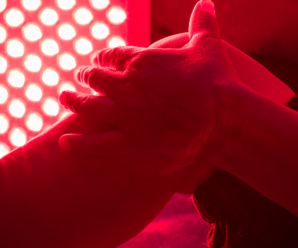
When we have leg pain, we assume wear and tear on the joints or sore muscles are responsible. Most people don’t know that leg pain could be caused by blockages inside arteries in your legs.
This condition is called peripheral artery disease. It’s a form of atherosclerosis, which is the medical term that means your arteries have narrowed due to plaque buildup.
Coronary artery disease, which causes heart attacks, is another form of atherosclerosis that affects blood vessels in the heart. When certain blood vessels in the neck are blocked, doctors call it carotid artery disease. People who have peripheral artery disease are likely to have narrowing in other arteries.
“Peripheral artery disease is severely under-diagnosed,” said Dr. Dan Gavrila, a Marshfield Clinic Health System cardiologist. “Doctors and patients have a responsibility to be more aware of it.”
Pain while walking is a sign
At least half of patients with peripheral artery disease have no symptoms.
As the condition progresses, patients have symptoms like leg discomfort, heaviness and muscle pain when walking. It’s painful because your legs aren’t getting enough blood and oxygen. The pain can become so intense that you need to take a lot of sitting breaks while walking. The severe pain is known as a “leg attack.”
“Leg attacks are an extreme manifestation of peripheral artery disease that happen when the artery is completely blocked,” Gavrila said.
Eventually, you may have pain even when you’re sitting.
Blockages are hard on the legs
Lack of blood flow and oxygen puts stress on your limbs. You can get sores on your legs and feet that don’t heal. In the worst-case scenario, the wounds may become infections that don’t heal because of insufficient blood flow, and that part of your leg must be amputated.
Diabetics need to be especially careful with this limb- and life-threatening disease,” Gavrila said.
People who have diabetes are at greater risk for peripheral artery disease and for complications like infected wounds. They may not notice sores on their lower legs and feet, they may not experience pain and the disease affects most or all of their blood vessels.
Talk to your doctor about peripheral artery disease
Diagnosing peripheral artery disease involves a simple, non-invasive test. If you have leg pain when walking or you have risk factors for heart disease, ask your doctor about getting tested. Peripheral artery disease is serious, but it can be managed if you know you have it.
If you smoke, it’s important that you quit. Peripheral artery disease is very common in smokers. Eating a healthful diet and controlling high cholesterol and high blood pressure can prevent the problem from getting worse. Walking may be hard to do, but exercising as much as you can will improve blood flow and eventually reduce pain.
Specialists, including cardiologists, vascular surgeons and interventional radiologists, can treat more serious blockages and potentially save limbs with various procedures like balloon angioplasties, stents or bypass surgery.
“If a doctor gets involved and the patient follows advice to improve cardiovascular health, severe consequences can almost always be avoided,” Gavrila said.







Leave a Reply